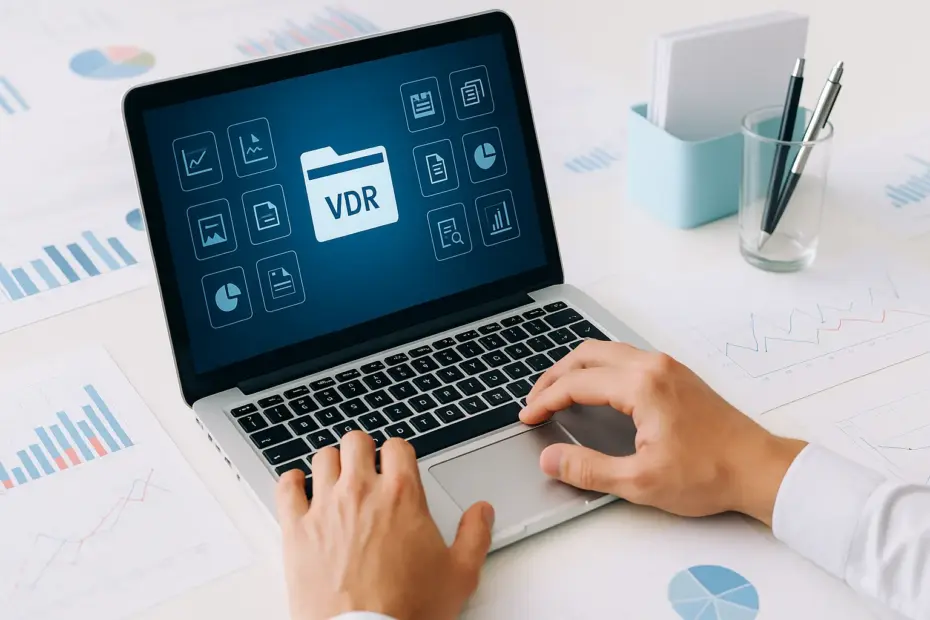When it’s time to share confidential documents for a transaction — whether it’s fundraising, M&A, or legal due diligence — knowing how to set up a virtual data room can save time, reduce risk, and build trust among key stakeholders. For investors, lawyers, and deal teams, the structure and security of your VDR can make or break the success of your deal.
In this guide, we break down how to quickly and professionally create a data room that meets the expectations of discerning professionals.
What Is a Virtual Data Room (VDR)?
A virtual data room (VDR) is a secure digital platform used to store and share sensitive documents with external parties. It’s essential for high-stakes business scenarios like:
- Fundraising rounds
- M&A due diligence
- Legal disclosures
- Strategic partnerships
Unlike generic file-sharing tools, VDRs offer advanced permission controls, audit trails, and compliance with standards like SOC 2, HIPAA, and GDPR—making them ideal for U.S. legal and financial use cases. It’s especially important when building a data room for startups, where transparency and investor confidence are critical from day one.
Step 1: Select a VDR Platform That Fits Professional Use Cases
Investors, attorneys, and corporate teams require more than just file storage — they need a platform that emphasizes clarity, compliance, and control.
Key features to look for:
- Granular permission settings
- Watermarking and non-disclosure controls
- Audit logs and version tracking
- Compliance with U.S. legal frameworks (SEC, FINRA, HIPAA, etc.)
Recommended VDRs for Professional Use:
| Provider | Best For | Standout Features | Compliance & Security | Pricing Model |
|---|---|---|---|---|
| iDeals | Startups, legal firms, cross-border M&A | Granular permissions, Q&A tools, fence view | SOC 2, HIPAA, GDPR, ISO 27001 | Tiered pricing based on features and storage |
| Intralinks | Enterprise M&A, IPOs, and compliance-heavy deals | AI-powered workflow tools, deep audit logging | Bank-grade security, GDPR, ISO 27001, SOC 2 | Premium, quote-based enterprise pricing |
| Box | SMBs, healthcare, and legal document storage | Cloud storage with native integration features | HIPAA, FINRA, FedRAMP compliance | Subscription-based, flexible plans |
| DealRoom | M&A deal teams, corporate development | End-to-end M&A workflow, task tracking, fast UI | SOC 2, GDPR, U.S.-hosted servers | Flat-rate monthly and annual pricing |
| Venue (DFIN) | Large enterprises, IPOs, legal teams | Auto-redaction, contract analytics, fast setup | SOC 2, ISO 27001, U.S.-based infrastructure | Quote-based, with a free trial available |
Step 2: Organize Documents for Each Stakeholder Group
Professional users expect a clean, intuitive layout when reviewing materials. Use folders that reflect how investors, lawyers, and executives typically think.
Suggested Folder Structure:
- Legal Docs: NDAs, corporate bylaws, litigation summaries
- Financials: Balance sheets, P&L statements, audit reports
- Cap Table & Equity Info: Shareholder lists, options, SAFEs
- HR & Compliance: Employment contracts, IP assignments
- Commercial Agreements: Customer contracts, supplier terms
- Investment Materials: Pitch deck, use of funds, exit strategy
Tips:
- Use PDFs where possible
- Name files clearly and consistently
- Avoid clutter or unpolished drafts
A well-organized VDR speeds up due diligence, shows professionalism, and prevents costly back-and-forth.
Step 3: Set Permissions by Role
Different stakeholders need access to different documents. VDRs allow you to define access by role and control visibility.
Typical Roles & Access:
- Investor: View-only access to key financials and fundraising docs
- Legal Counsel: Full access to contracts, IP, and litigation records
- Internal Deal Team: Admin or edit access to all content
Enable features like:
- Two-factor authentication (2FA)
- Download restrictions
- Dynamic watermarking
- Activity tracking and audit logs
These tools protect sensitive information and provide transparency to legal teams and compliance officers.
Step 4: Review and Launch
Before you invite others into your data room:
- Test the view from an external user’s perspective
- Confirm all files are complete and correctly placed
- Double-check permissions for each user group
Once you’re ready, send custom invite links to investors, law firms, or buyers—then monitor access logs to track interest and activity.
Expert Tips for Professionals
- Set expectations early: Clarify what’s in the room and when it will be updated
- Use the Q&A feature to answer investor or legal questions securely
- Avoid info overload: Only share what’s relevant at each deal stage
- Stay compliant: Ensure your data room follows U.S. regulations and legal practices
Conclusion: A Well-Built Data Room Builds Trust
If you’re preparing for a financing round, legal diligence, or an M&A event, learning how to set up a virtual data room is more than a technical task — it’s a critical part of building professional trust. By choosing the right platform and structuring your materials for lawyers, investors, and deal teams, you can speed up your process and maximize deal success.
